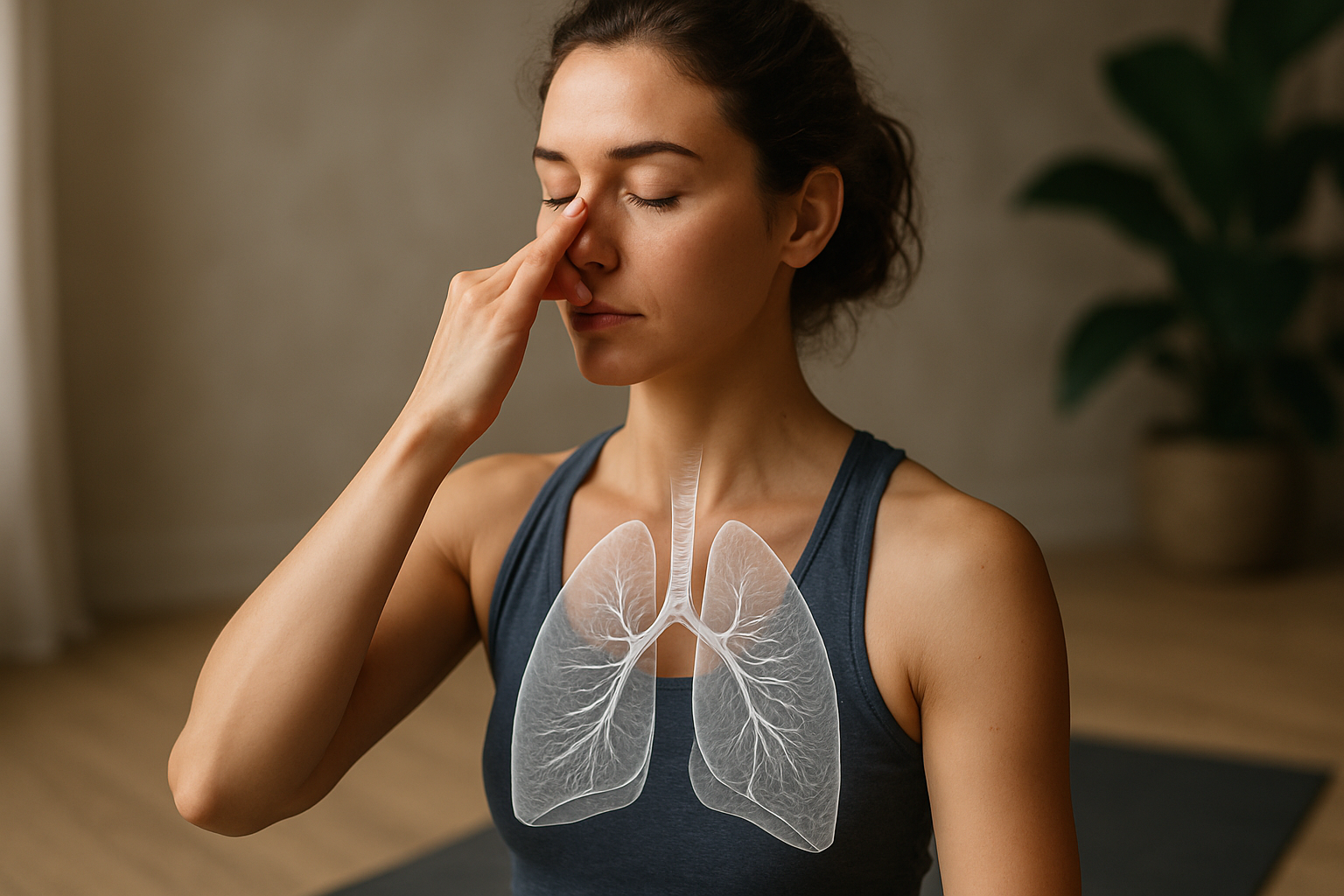Breath Gymnastics: The Hidden Gem of Fitness
In the vast landscape of fitness and wellness, a revolutionary practice is quietly gaining momentum. Breath gymnastics, an innovative approach to physical and mental well-being, combines the ancient wisdom of breath control with modern exercise science. This unique discipline is transforming how we perceive the connection between respiration and overall health. As fitness enthusiasts and health-conscious individuals seek new ways to optimize their well-being, breath gymnastics emerges as a powerful tool for enhancing performance, reducing stress, and promoting longevity. Let's delve into this fascinating world where the simple act of breathing becomes a sophisticated art form, offering benefits that extend far beyond the gym or yoga studio.

Russian physician Konstantin Buteyko developed one of the earliest systematic approaches to breath training in the 1950s. His method, focused on reducing breathing volume, laid the groundwork for future breath gymnastics techniques. In the following decades, researchers and practitioners from diverse fields, including sports medicine, pulmonology, and alternative health, contributed to the evolution of breath gymnastics.
The 1980s and 1990s saw a surge in scientific interest in the physiological effects of controlled breathing. Studies began to reveal the profound impact of breathing patterns on various bodily systems, from cardiovascular health to cognitive function. This research provided a solid foundation for the development of more sophisticated breath gymnastics protocols.
The Science Behind Breath Gymnastics
At its core, breath gymnastics is based on the principle that optimal breathing patterns can significantly improve physical and mental performance. The science behind this practice is multifaceted, involving several key physiological mechanisms.
Firstly, proper breathing techniques enhance oxygen uptake and carbon dioxide release, improving overall gas exchange in the lungs. This optimization of respiratory function can lead to increased energy levels, improved endurance, and better recovery from physical exertion.
Secondly, controlled breathing has a direct impact on the autonomic nervous system. Deep, slow breaths activate the parasympathetic nervous system, promoting relaxation and reducing stress. This effect can lower heart rate, decrease blood pressure, and improve immune function.
Furthermore, breath gymnastics can influence brain activity. Certain breathing patterns have been shown to enhance alpha brain wave activity, associated with increased focus and cognitive performance. This neurological impact explains why many practitioners report improved mental clarity and concentration.
Techniques and Practices in Breath Gymnastics
Breath gymnastics encompasses a wide array of techniques, each designed to target specific aspects of health and performance. Some of the most popular and effective methods include:
-
Diaphragmatic Breathing: This fundamental technique focuses on engaging the diaphragm fully during inhalation and exhalation. It promotes deeper, more efficient breathing and is often used as a foundation for more advanced practices.
-
Alternate Nostril Breathing: Originating from yoga traditions, this technique involves alternating breath between the left and right nostrils. It’s believed to balance the body’s energy and promote mental calmness.
-
Box Breathing: A method often used by athletes and military personnel, box breathing involves inhaling, holding the breath, exhaling, and holding again, each for a count of four. This technique is particularly effective for stress reduction and focus enhancement.
-
Pursed Lip Breathing: This technique involves inhaling through the nose and exhaling slowly through pursed lips. It’s particularly beneficial for individuals with respiratory conditions, as it helps maintain open airways.
-
Resistance Breathing: This advanced technique uses devices or exercises that create resistance during inhalation or exhalation, strengthening respiratory muscles and improving lung capacity.
Applications in Fitness and Sports Performance
The integration of breath gymnastics into fitness routines and sports training has gained significant traction in recent years. Athletes across various disciplines are incorporating these techniques to enhance their performance and recovery.
In endurance sports, such as long-distance running and cycling, breath gymnastics helps athletes optimize their oxygen uptake and manage their energy more efficiently. By training to breathe more effectively, athletes can delay the onset of fatigue and maintain higher performance levels for longer periods.
For strength and power athletes, breath gymnastics offers benefits in terms of core stability and power generation. Techniques like the Valsalva maneuver, a controlled breath-holding method, are commonly used during weightlifting to increase intra-abdominal pressure and protect the spine.
In team sports, where quick recovery between bursts of intense activity is crucial, breath gymnastics provides tools for rapid physiological regulation. Athletes can use specific breathing patterns to quickly shift from an aroused state to a more calm and focused one, enhancing decision-making and performance consistency.
Therapeutic Applications of Breath Gymnastics
Beyond its applications in fitness and sports, breath gymnastics has found a place in therapeutic settings. Healthcare professionals are increasingly recognizing its potential in managing various health conditions.
For individuals with respiratory disorders such as asthma or chronic obstructive pulmonary disease (COPD), breath gymnastics offers techniques to improve lung function and manage symptoms. Practices like pursed lip breathing and diaphragmatic breathing can help patients increase their lung capacity and reduce breathlessness.
In the realm of mental health, breath gymnastics is being used as a complementary therapy for conditions like anxiety and depression. The ability to modulate the nervous system through controlled breathing provides a powerful tool for emotional regulation and stress management.
Pain management is another area where breath gymnastics shows promise. Techniques that promote relaxation and alter pain perception can be valuable for individuals dealing with chronic pain conditions.
The Future of Breath Gymnastics
As research in breath gymnastics continues to expand, we can expect to see even more innovative applications in the coming years. Wearable technology and mobile apps are already being developed to guide users through breath gymnastics routines and provide real-time feedback on breathing patterns.
The integration of breath gymnastics into virtual reality experiences is another exciting frontier. This technology could offer immersive environments for practicing breathing techniques, making the learning process more engaging and effective.
In the medical field, there’s growing interest in using breath gymnastics as part of personalized treatment plans. As our understanding of the links between breathing patterns and various health conditions deepens, we may see more tailored breath gymnastics protocols developed for specific medical needs.
The workplace is another area where breath gymnastics is likely to make significant inroads. With increasing awareness of the impact of stress on productivity and well-being, companies may begin incorporating breath gymnastics into their wellness programs to help employees manage stress and enhance focus.
In conclusion, breath gymnastics represents a fascinating intersection of ancient wisdom and modern science. As we continue to uncover the profound effects of breathing on our physical and mental states, this discipline is poised to play an increasingly important role in our approach to health, fitness, and overall well-being. Whether you’re an elite athlete looking to gain a competitive edge, a busy professional seeking stress relief, or someone managing a health condition, breath gymnastics offers a powerful, accessible tool for transformation. As we move forward, the simple act of breathing consciously may well become one of the most potent practices in our quest for optimal health and performance.





